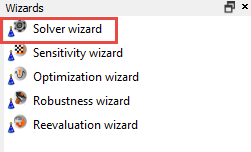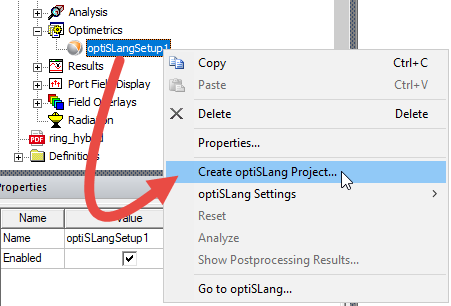optiSLang User Workflow
This topic explores the general workflow for creating an optiSLang project from Ansys Electronics Desktop (AEDT).
- Prepare the AEDT project by ensuring:
- Parameters exist.
Note:
optiSLang scans parameters at both the project and design level. Hidden parameters are also scanned. See: Parametrization for optiSLang Integration.
- Project is solved.
- Results reports exist and are prepared for the specific use case
- For a standard use case, set all variables to nominal.
- For a use case with a user-defined sweep, display all variations.
- Parameters exist.
- Invoke the Solver Wizard in optiSLang or create an optiSLang project directly from AEDT.


- Create a one-node setup or a two-node setup.
- A one-node setup registers both parameters and responses. This is the type of setup created by the wizard.
- A two-node setup registers parameters in the first node and responses in the second. This is a more complicated setup that requires cloning the integration node, setting function switches, and setting absolute or relative paths. Consult the optiSLang help for more information.
- View results in either tabular or tree view.
- Enable Shared Parameters View. By default, parameters from different models are treated separately and a prefix based on the model name ensure uniqueness of names. In shared mode, sub-models are kept in sync and prefixes are unnecessary.

- Reload the AEDT project in optiSLang to see the effects of changed settings.
